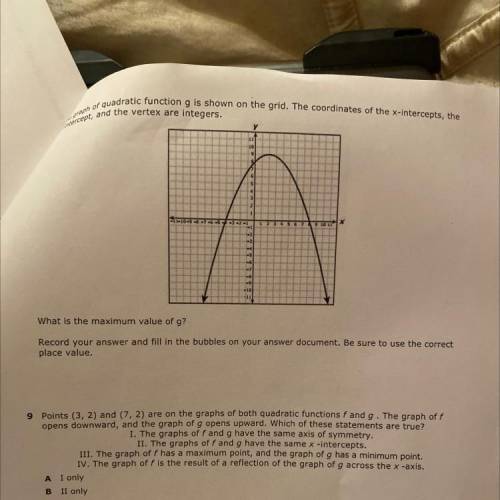
Mathematics, 28.03.2021 02:10 kayranicole1
Dints (3, 2) and (7, 2) are on the graphs of both quadratic functions f and g. The graph of f
pens downward, and the graph of g opens upward. Which of these statements are true?
I. The graphs of f and g have the same axis of symmetry.
II. The graphs of f and g have the same * -intercepts.
III. The graph of f has a maximum point, and the graph of g has a minimum point.
IV. The graph of f is the result of a reflection of the graph of g across the x -axis.
Tonly


Answers: 3


Other questions on the subject: Mathematics

Mathematics, 21.06.2019 15:30, superstarsara5ouh83x
Write an equation of a line in slope intercept form that is perpendicular to the line 2x -3y = 12 and passes through the point (2, 6).
Answers: 3



Mathematics, 21.06.2019 20:30, amyaacrawford86
Solve each quadratic equation by factoring and using the zero product property. 14x - 49 = x^2
Answers: 2
You know the right answer?
Dints (3, 2) and (7, 2) are on the graphs of both quadratic functions f and g. The graph of f
pens...
Questions in other subjects:

Advanced Placement (AP), 19.09.2019 22:50


Mathematics, 19.09.2019 22:50


History, 19.09.2019 22:50

Mathematics, 19.09.2019 22:50

Mathematics, 19.09.2019 22:50

Social Studies, 19.09.2019 22:50

Physics, 19.09.2019 22:50



